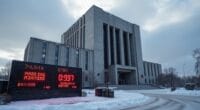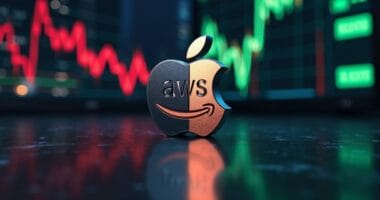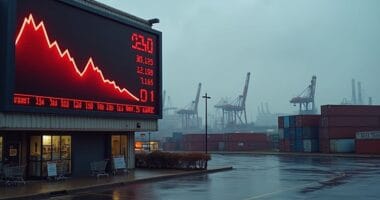Lockheed Martin has bet its future on the Golden Dome, America’s most ambitious missile defense project since the Manhattan Project. The $175 billion shield represents a make-or-break moment for the defense giant, which secured $25 billion for project integration. Success means dominating the defense industry for decades. Failure? Financial disaster. With rising threats from Russia and China, the stakes couldn’t be higher – for Lockheed and national security.

As geopolitical tensions rise and missile threats loom ever larger, Lockheed Martin finds itself at the center of America’s most ambitious defense project since the Manhattan Project. The Golden Dome, a layered missile defense shield with a price tag that could balloon from $175 billion to over $500 billion, represents a make-or-break moment for the defense giant.
Let’s be real – this isn’t just another government contract. With $25 billion already secured for project integration, Lockheed Martin is betting big on its ability to coordinate this massive undertaking. Their track record with satellites, interceptors, and laser weapons makes them a natural fit. But the stakes? Astronomical. The project’s emphasis on rapid technology development mirrors the urgency of a national security imperative. Their proven open architecture systems enable seamless integration across the defense industry.
Lockheed Martin’s $25 billion gamble on the Golden Dome project proves they’re all-in on revolutionizing missile defense.
The Golden Dome isn’t your grandfather’s missile defense system. Envision this: space-based interceptors knocking out missiles right after launch, followed by ground and sea-based systems picking off stragglers in space, and finally, lasers zapping any surviving warheads before they can ruin anyone’s day. It’s like a deadly game of multi-dimensional whack-a-mole. Like the market capitalization method used in the S&P 500, the system’s components are weighted by strategic importance.
The technological demands are staggering. We’re talking cutting-edge satellite networks, AI-powered command systems, and partnerships with tech hotshots like Palantir and SpaceX. Lockheed’s experience building the U.S. Missile Defense System’s C2BMC network gives them a leg up, but this is a whole new ballgame.
Money talks, and this project screams. The economic ripple effects could reshape America’s entire defense industry. Jobs, innovation, supply chains – everything gets supercharged. But here’s the kicker: cost overruns and technical headaches could turn this golden opportunity into a financial nightmare.
For Lockheed Martin, success means cementing their position as America’s premier defense contractor for decades to come. Failure? Well, let’s just say shareholders won’t be throwing any parties. In the face of rising threats from Russia and China, including those pesky hypersonic missiles, the Golden Dome isn’t just another project – it’s Lockheed’s shot at defining national security for the next generation.





